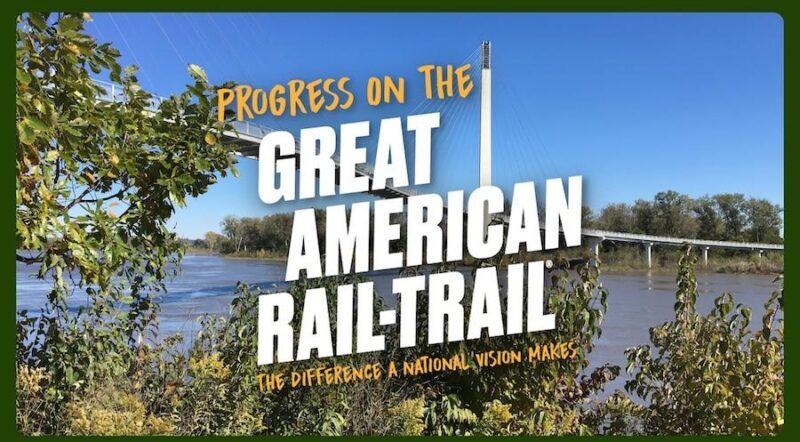Trails Movement Wrapped: A Review of 2025’s Big Moments

One thing was true for the trails movement in 2025: Expect unpredictability. While Rails to Trails Conservancy secured some major wins for trail development, advocacy and participation, the organization countered blows that threatened critical trail funding and the pivotal legal framework that is at the foundation of America’s rail-trails.
In this time of tumult, we’re leaning into something that’s held true over four decades of this work: Trails are a common thread bringing people and communities together. The demand for trails is everywhere, crossing the political spectrum and benefiting communities of all sizes and stripes. Here we reflect on our progress to accelerate support for trails, walking and biking, and make an impact across America in 2025.
The Rail-Trail Origin Story
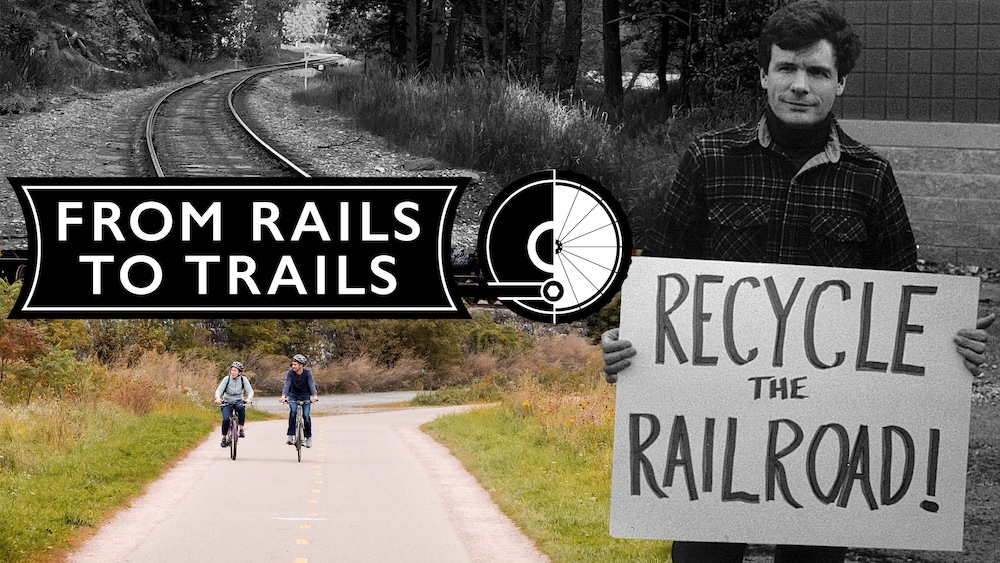
In the run-up to Rails to Trails Conservancy’s 40th anniversary in 2026, a new PBS documentary by filmmaker Dan Protess, “From Rails to Trails,” captures the passion, protest and progress at the heart of the movement to bring joyous transformation to the American landscape. The film, which aired on Oct. 15, 2025, on PBS.org and on public television stations nationwide, can be streamed online.
Connecting More Americans by Trail

In October, RTC’s TrailNation Summit in Cleveland, Ohio, galvanized the trails movement, as nearly 400 trail advocates, professionals and leaders from across diverse sectors—including economic development, planning, research, real estate and tourism—gathered together for three days of peer-to-peer learning and idea sharing to accelerate the development of connected trail and active-transportation networks in their communities and nationwide. With 40 states represented, it was a powerful reminder of the momentum and optimism for trails all across the country.
Across RTC’s TrailNation initiative—from our work to build the connective tissue of those working to connect America’s trail networks, to our portfolio of 10 projects serving as powerful models for what’s possible when trails are at the heart of communities—progress was made from coast to coast.
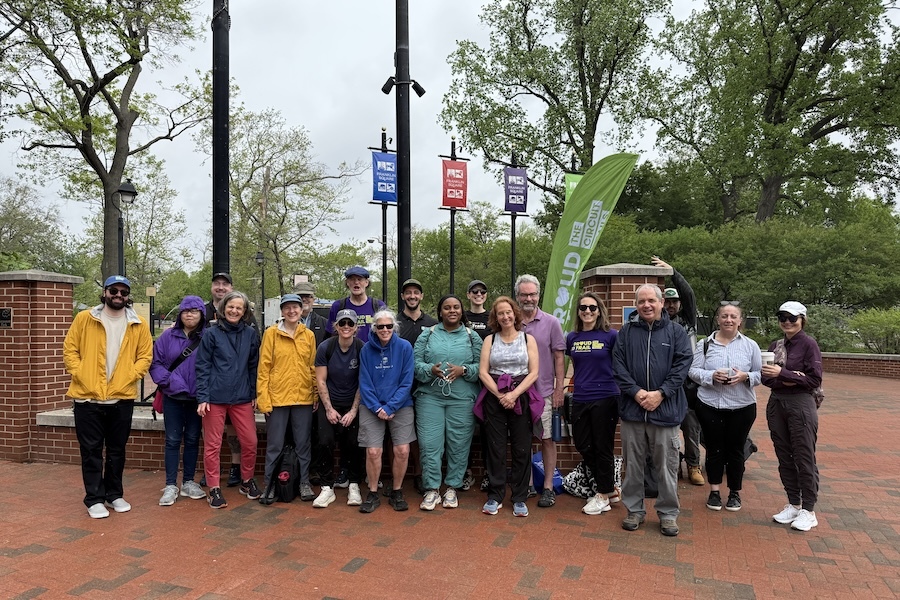
In the East, an exciting milestone was celebrated this past November for the Circuit Trails: The network officially reached its goal of 500 miles of trails across the region by 2025. On the West coast, a new segment of the San Francisco Bay Trail broke ground in Richmond, California; the project is part of the Bay Area Trails Collaborative’s vision to connect the region with 2,675 miles of trails.
Meanwhile, in the Midwest, the Industrial Heartland Trails Coalition’s efforts to develop a connected trail system across four states—Pennsylvania, West Virginia, Ohio and New York—officially opened a new 2-mile section of the expansive Ohio & Erie Canal Towpath Trail in the Greater Cleveland area that, after four decades of progress, is planned for completion by 2030.
Developing on a route connecting Washington, D.C., and Washington state, the 3,700-mile Great American Rail-Trail® is now almost 56% complete, with nearly $30 million in funding secured for more trail segments. This funding comprises local, state, federal and private investments—showing the widespread desire for this infrastructure at all levels. This year saw the opening of new Great American trails or the extensions of existing trails in Ohio, Indiana, Iowa, Nebraska, Wyoming and Washington—and we expect 2026 to be an even bigger trail construction year.
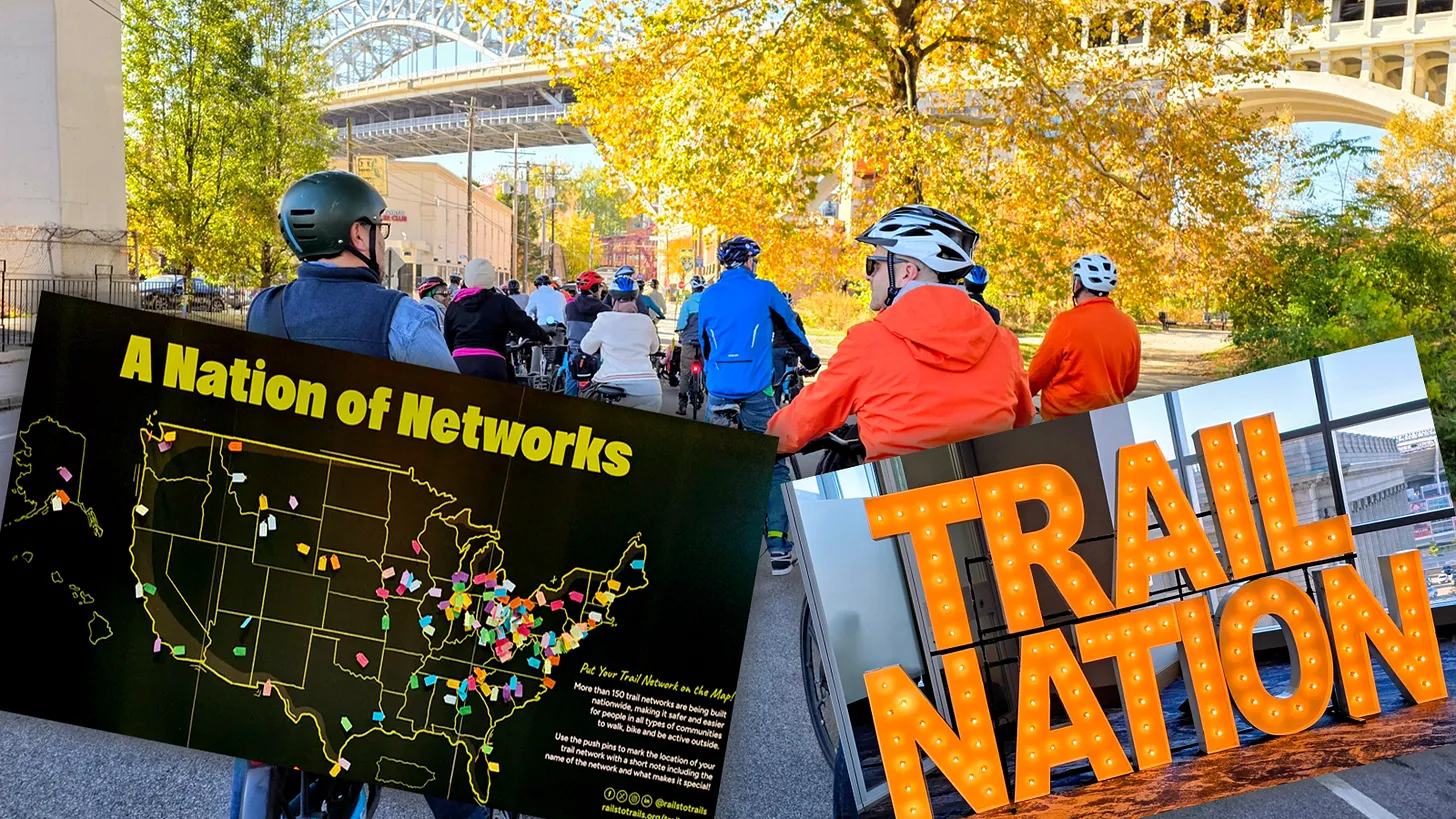
Bringing Communities Together on America’s Pathways
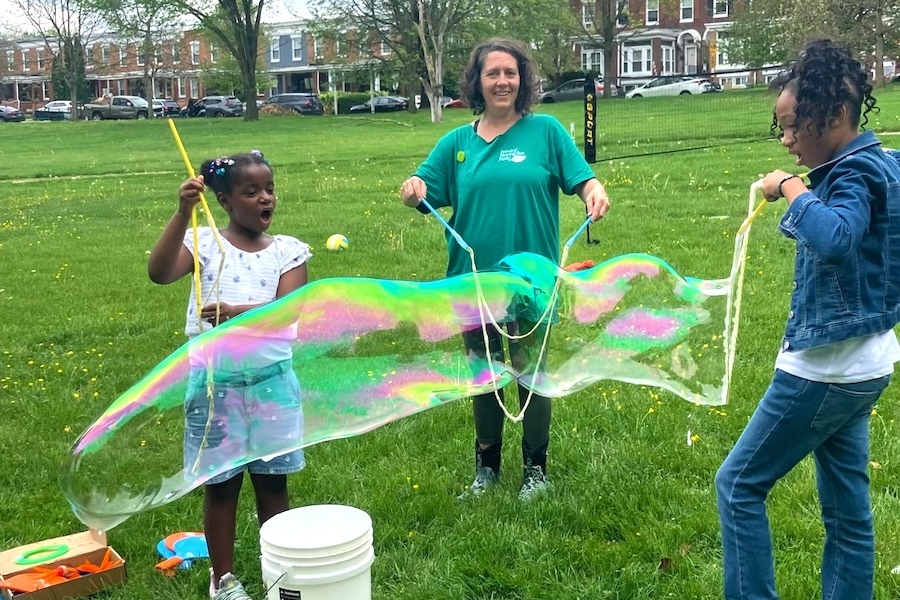
In April, we brought more than 33,000 participants together for Celebrate Trails Day, the nation’s annual springtime celebration of America’s more than 42,500 multiuse trails and pathways.
Each year on Celebrate Trails Day, RTC encourages everyone—through planned events or simply with family and friends—to get outdoors and experience the joy and impact trails bring to lives and communities. In 2025, there were more than 275 events across 49 states, the District of Columbia and Puerto Rico—including in Ohio, where festivities incorporated the grand opening of the Hellbender Preserve Trail, the first multiuse trail in Jefferson County and the county’s first completed piece of the Great American Rail-Trail.
In a survey of participants, RTC found that the money people spent preparing for or participating in Celebrate Trails Day activities generated an estimated $1.3 million in direct spending associated with the day—providing a tangible example of how trails and active transportation contribute to the U.S. economy, currently estimated at a combined $34 billion annually. In addition, people reported spending an average of 104 minutes being physically active on Celebrate Trails Day—28% more time than a typical day.
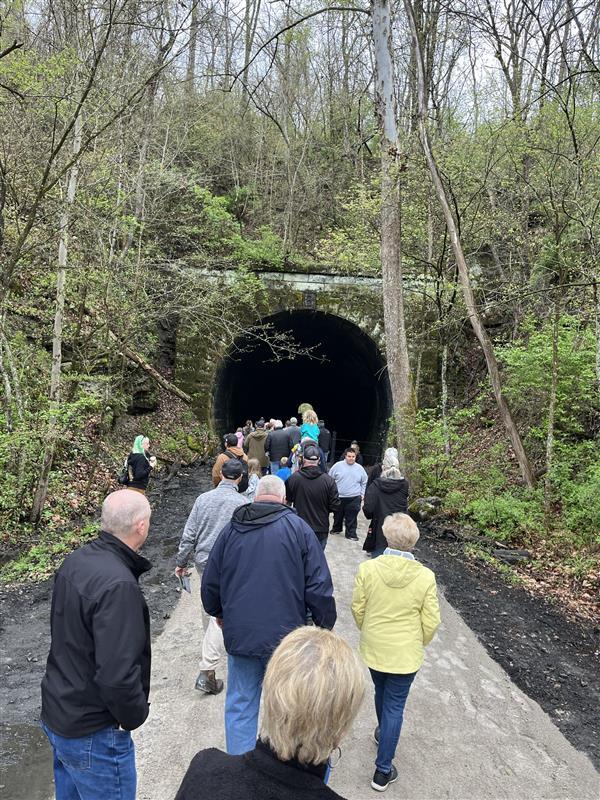
Trails Across America Historical Markers
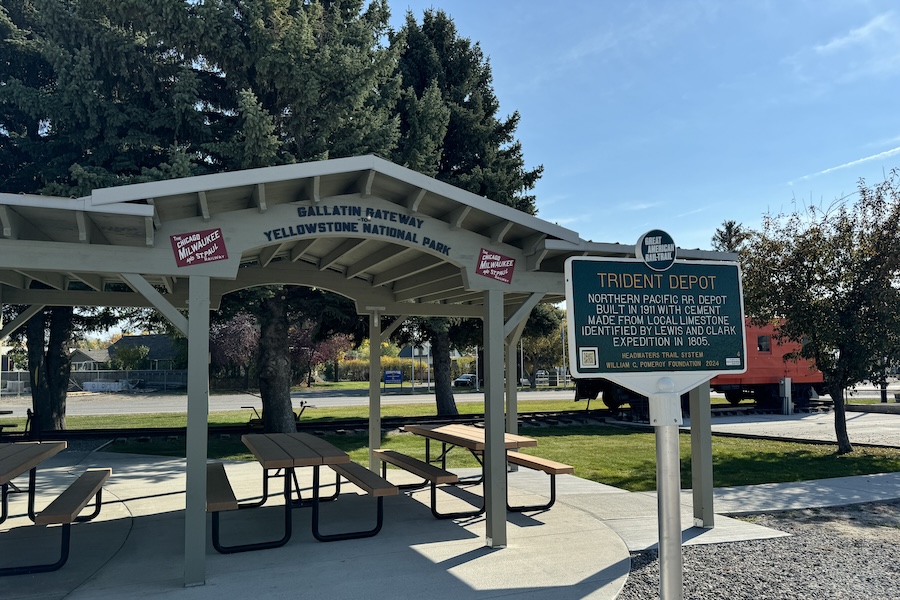
In the summer of 2025, RTC and the William G. Pomeroy Foundation launched a new historical marker program, Trails Across America, to highlight the unique places, people and events along America’s 42,500+ miles of greenways, canal towpaths and rail-trails, linking communities while honoring their pasts. RTC is collaborating with communities to develop the cast-aluminum markers, which are fully funded by the foundation.
Learn more about the program and how to apply.
Ensuring Trail Benefits for All

Equity is at the core of RTC’s approach to trail development, empowering communities to define how trail networks are created and ensuring that residents directly benefit from their use and impact. In 2025, federal Reconnecting Communities grants—awarded to infrastructure projects with a focus on historically under-resourced and under-represented areas—were key to advancing this equitable development approach within our TrailNation portfolio.
Buoyed by a $1.6 million grant, momentum is growing for the transformation of Milwaukee’s industrial 30th Street Corridor from an unused railway into a vibrant 7-mile multiuse trail that will strengthen the city’s economy, improve public safety and support long-term growth. When complete, the trail will be part of a connected loop nestled within RTC’s larger Route of the Badger project, which is linking more than 700 miles of trail across Southeast Wisconsin.
Similarly, the Richmond Industrial Trail, part of the broader Circuit Trails network, is forging ahead in North Philadelphia powered by a $2 million Reconnecting Communities grant to transform a derelict freight rail line that once divided the city’s Fairhill and Kensington neighborhoods into a safe, accessible place for the community.
For rural and small-town communities that want to tap into the positive impacts of trails, RTC kicked off a new, two-year program in 2025 called the TrailNation Accelerator, supported by a major investment from the REI Cooperative Action Fund. The initiative will support 8–10 regional teams of trail champions—from grassroots advocates to elected officials—to bring their trail visions to life by providing them with the tools, strategies and relationships necessary to move their trail networks forward.
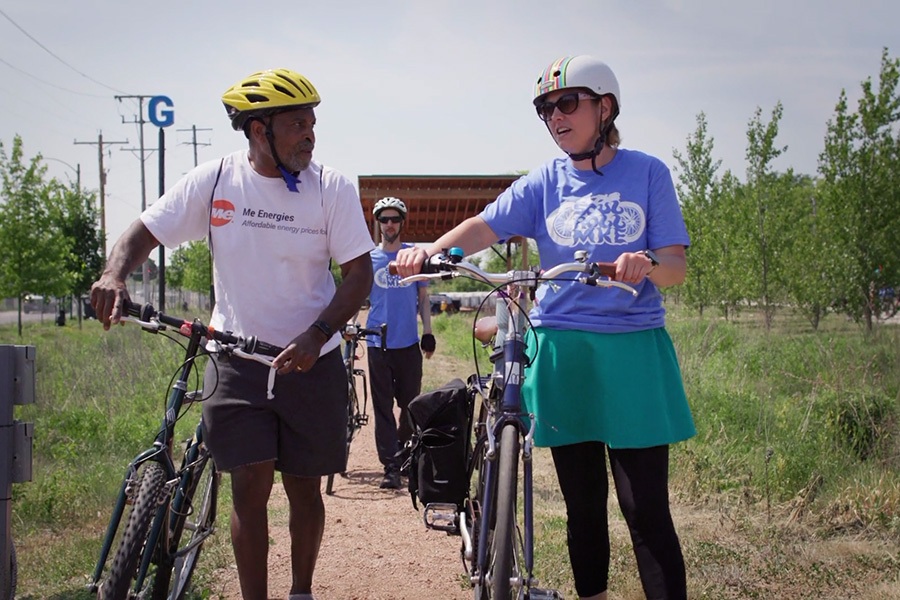
2025’s Hall of Fame Trail
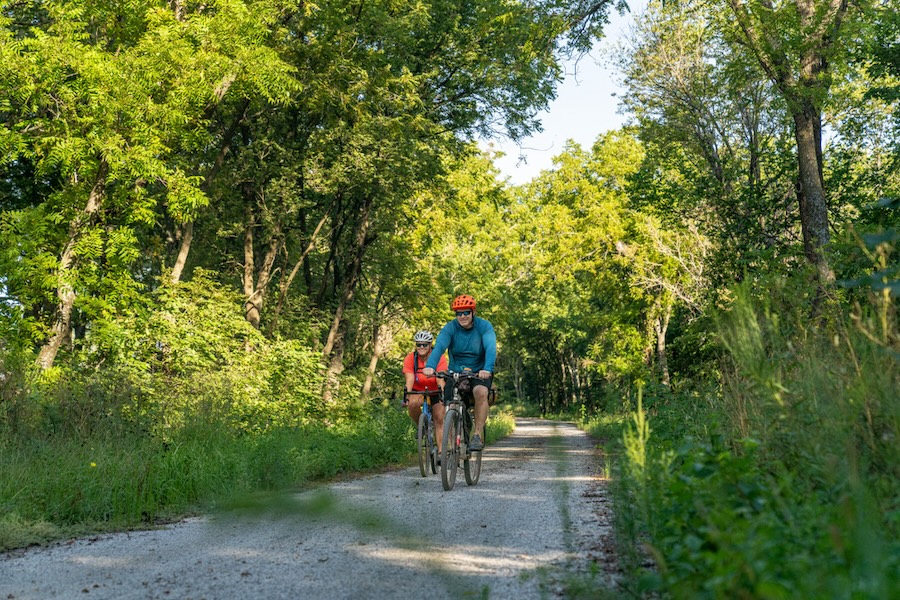
A shining example of an impactful rural rail-trail is RTC’s 2025 Hall of Fame winner, the Flint Hills Trail State Park, connecting more than a dozen communities ranging in size from just 28 people to about 12,000 along its 118-mile route in eastern Kansas. The rail-trail helps to fuel the economies of its trail towns through tourism and recreation, providing more than $1.8 million in annual economic impact to the communities along the route, according to a 2021 economic impact study conducted by Wichita State University.
Related: Trail of the Month Feature on Kansas’ Flint Hills Trail State Park
2025’s Rail-Trail Champion
This year, RTC named Kay Ehas, chief executive officer of Groundwork Jacksonville, as the 2025 Doppelt Family Rail-Trail Champion for modeling a community-driven approach anchored in public-private partnership in the development of Florida’s Emerald Trail, a 30-mile route that will connect 14 historic neighborhoods and downtown Jacksonville to local and regional trails, parks, schools, businesses, transit and other destinations.
Supporting Trail Development and Engagement

RTC’s Trail Grants program continues to invest in transformative projects and programs that create more access to trails for more people across the country, supporting organizations at all levels—from local and national nonprofits to public agencies—with a focus on community-based leadership and engagement and long-term impact.
In 2025, we awarded $398,000 to 40 organizations that are advancing trail projects across rural, suburban and urban communities. The grants are focused on tackling critical elements of the work to advance the nation’s trail networks, from expanding trail access, to powering new opportunities for mobility and economic development, to creating programs that welcome young people and families to experience the outdoors in new ways.
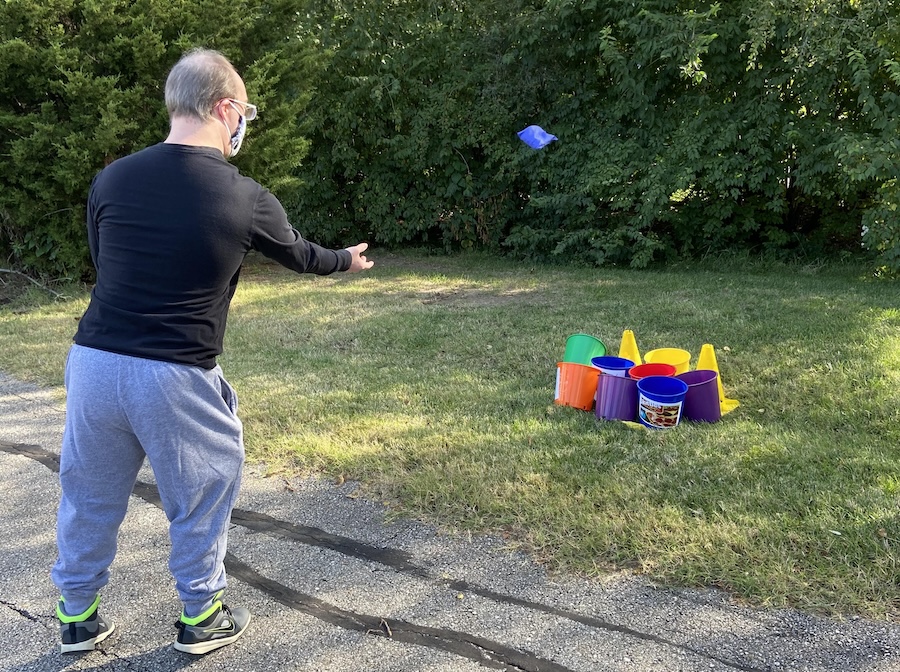
The new Trail Grants recipients include Latino Outdoors for programming that provides members of Latinx and other underrepresented communities with transformative outdoor experiences; HBCUs Outside, which is working with six Historically Black Colleges and Universities (HBCUs) to connect students with trails; and the Special Olympics, which aims to foster community independence and physical activity in its athletes.
Protecting Trails in the Courts

RTC celebrated a legal victory this summer when U.S. District Judge Paul Barbadoro ruled in favor of RTC and partners in New Hampshire who challenged a highway project that would have violated a rail corridor’s historic preservation protections. The decision comes after a protracted legal battle over a proposed tunnel for the Derry Rail Trail that could safely carry bikers and pedestrians beneath a new six-lane I-93 exit ramp north of downtown Derry.
Related Link: Trail of the Month Feature on New Hampshire’s Derry Rail Trail
Preparing for the Challenges Ahead
While demand for safe spaces to walk, bike and be active outdoors has never been greater, the future of this essential infrastructure is under attack. In July 2025, the One Big Beautiful Bill was signed into law, clawing back about $750 million for critical trail and active transportation projects from the Neighborhood Access and Equity Program. More recently, the U.S. Department of Transportation has also canceled existing grants intended to make walking and biking in communities across America safer and easier.
With the reauthorization of the country’s surface transportation bill fast approaching in 2026, RTC has developed a Reauthorization Agenda to deliver the active transportation infrastructure that America needs—and is working alongside hundreds of partners and Congressional champions to protect the federal programs that make it possible for the country to create, connect and maintain its trails.
RTC has also worked closely with partners on the ground to secure some important victories for trails, despite challenges to funding at the state level this past year. For example, in Maine, RTC was successful in actively engaging with a local rail-trail organization to pass two bills (LD 29 and LD 30) that will facilitate the construction of several rail-trails—as much as 70 miles of connected routes—that may make it possible to one day walk or bike between Portland and Augusta on protected trail.
And in Michigan, RTC has partnered with the Michigan Trails and Greenways Alliance in the development of the new 2050 Trails Plan, which will shape the state’s transportation infrastructure for decades to come.
RTC continues to collaborate with state and federal partners all across the United States to protect the future of trails and ensure their continued impact nationwide.


Donate
Everyone deserves access to safe ways to walk, bike, and be active outdoors.
